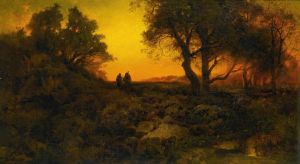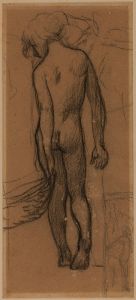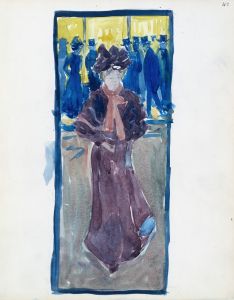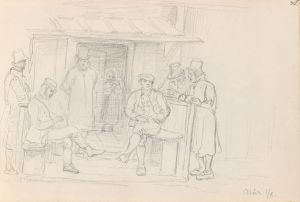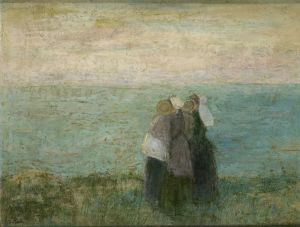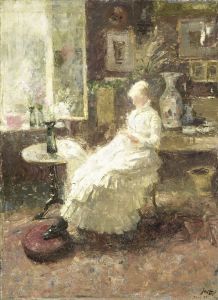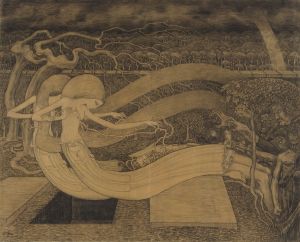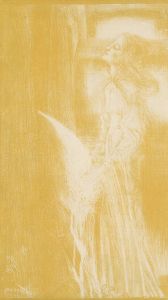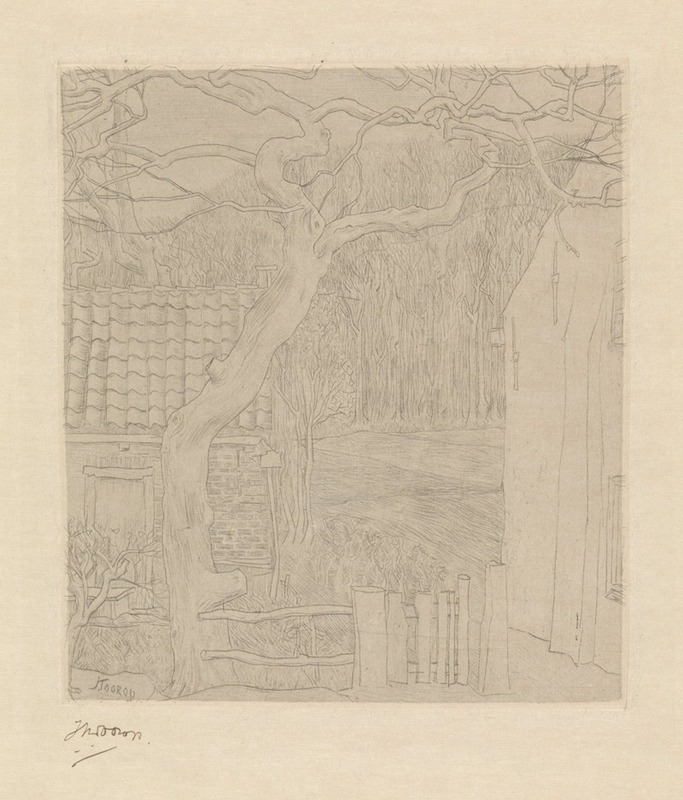
Boom bij twee huizen aan een bosrand
A hand-painted replica of Jan Toorop’s masterpiece Boom bij twee huizen aan een bosrand, meticulously crafted by professional artists to capture the true essence of the original. Each piece is created with museum-quality canvas and rare mineral pigments, carefully painted by experienced artists with delicate brushstrokes and rich, layered colors to perfectly recreate the texture of the original artwork. Unlike machine-printed reproductions, this hand-painted version brings the painting to life, infused with the artist’s emotions and skill in every stroke. Whether for personal collection or home decoration, it instantly elevates the artistic atmosphere of any space.
Jan Toorop's painting Boom bij twee huizen aan een bosrand (translated as Tree by Two Houses at a Forest Edge) is a work by the Dutch-Indonesian artist Jan Toorop (1858–1928). Toorop is widely recognized as a significant figure in the Symbolist and Art Nouveau movements, and his works often reflect a blend of styles and influences, ranging from Impressionism to Symbolism.
This particular painting depicts a serene natural scene featuring a tree situated near two houses at the edge of a forest. The composition highlights Toorop's sensitivity to nature and his ability to capture the interplay between human habitation and the surrounding landscape. The artwork is characterized by its detailed rendering of the tree and the subtle integration of the houses into the natural environment, showcasing Toorop's skill in balancing structure and organic forms.
While Toorop is best known for his Symbolist works and intricate Art Nouveau designs, Boom bij twee huizen aan een bosrand reflects a more subdued and naturalistic approach. This painting likely belongs to a period when Toorop explored themes of rural life and the Dutch countryside, which were recurring subjects in his oeuvre. His ability to depict the quiet beauty of such scenes demonstrates his versatility as an artist.
The exact date of the painting is not widely documented, nor is its current location or ownership. However, it is consistent with Toorop's broader body of work, which often includes elements of Dutch landscapes and rural settings. The painting is an example of Toorop's interest in capturing the harmony between nature and human presence, a theme that resonates throughout much of his artistic career.
Jan Toorop's legacy as an artist is significant, as he played a key role in the development of modern art in the Netherlands. His works are held in major collections and museums, and he remains a celebrated figure in art history. However, specific details about Boom bij twee huizen aan een bosrand remain limited in public records, and further research may be required to provide a more comprehensive understanding of this particular piece.






